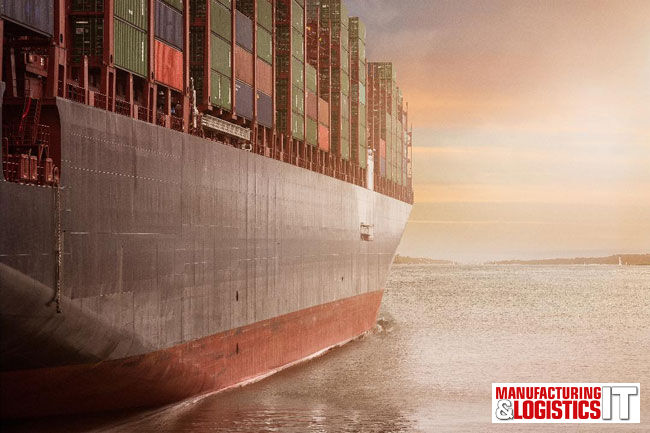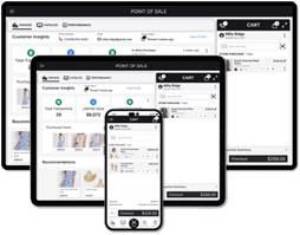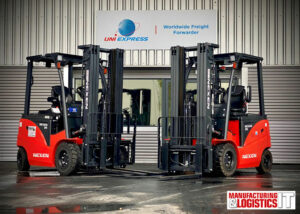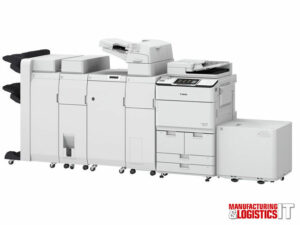Supply chain planning has huge potential to reduce the environmental impact of production and transportation, and supply chain solutions play a pivotal role in making this happen.
Better supply chain planning has a beneficial effect on sustainability targets such as the use of energy, raw materials, and the emission of CO2. Carlijn Goedhart, Sustainability Lead at DELMIA take a closer look at the dynamics of sustainable supply chain planning and the impact it can have on the world.
The Impact Of Supply Chain Planning On Sustainability
According to Wikipedia, “sustainability is a societal goal that relates to the ability of people to safely co-exist on Earth over a long time.” This means we need to carefully plan our usage of scarce resources: the use of land and water to grow food; the use of space to live, commute, entertain, sport, relax; the use of clean flowing water to clean or dispose; the use of fossil fuels to drive our cars, fly our planes and to generate electrical power.
In all cases, it is about managing Earth’s scarce resources so that in principle, countless future generations can enjoy life on our planet with the same quality as we can.

Many of Earth’s scarce resources are consumed by industrial processes and transport – which are the building blocks of today’s supply chains. According to the IPCC, about one-third of the global CO2 emissions are linked to industry, and 15% to transport – together this is almost half of the total CO2 emissions. The emissions that are generated to produce or transport, can be greatly influenced by the way supply chains are planned.
For example, a route that is optimized such that a truck needs less travelled distance to deliver the same number of packages, or a production system that saves energy by more efficient batching of products in furnaces. Therefore, supply chain planning has huge potential to reduce the environmental impact of production and transportation, and the likes of DELMIA Supply Chain Solutions play a pivotal role in making this happen.
Four levels of maturity
Level 1: Sustainability as a spinoff from supply chain improvement
The good news is that in many cases, better supply chain planning has a beneficial effect on sustainability targets such as the use of energy, raw materials, and the emission of CO2. Supply chain planning projects usually aim for increasing supply chain effectiveness, like delivery reliability and improving efficiency—often achieved by reducing stocks, production costs, and raw material usage.
There are many links between supply chain planning and sustainability goals, as illustrated by the following examples:
- The process of Sales & Operations Planning (S&OP) aims to align demand and supply for the complete supply chain. This means that decisions are made about when and where to produce what products in the most efficient way. Optimizing this plan can have a positive impact on CO2 emissions;
- The process of Master Production Scheduling (MPS) allows for choosing the resources that can produce in an energy-efficient manner when a choice is available. It can also ensure that perishable products are processed on time to avoid waste;
- The process of Production Scheduling can be used to avoid setup or cleaning between different products, to save energy and cleaning liquid;
- The process of Logistics Planning enables companies to optimize routes and the loading of means of transportation (e.g. trucks).
Level 2: Measure sustainability KPIs
“To measure is to know,” and “If you cannot measure it, you cannot improve it” are the words of Lord Kelvin. Improving sustainability of a process starts by quantifying and measuring indicators, for example the amount of CO2 emitted. Already more than 10 years ago, a producer of candy bars decided to print a transport’s CO2 emission on the packing slip, to make customers and suppliers more aware of the environmental impact.
Although this initiative is welcomed, making a figure available by itself will not enforce any change in decision-making. Packing slips are probably only read by employees that are working in warehouse operations, who do not have any decision-making power over the transports that are handled by the warehouse. Similarly, a key performance indicator (KPI), showing CO2 emissions on the screen of a planner, does not guarantee that the planner will actually try to influence this in a positive way when the management is only interested in efficiency and timeliness of production. Hence, making the sustainability KPIs available is necessary, but not sufficient.
Level 3: Involve sustainability KPIs in trade-offs
As the examples in the first level illustrate, it often happens that companies get some sustainability effect ‘for free’ when focusing on ‘traditional’ supply chain planning objectives. However, in other cases, trade-offs need to be made between the objectives, which makes the puzzle harder to solve. This is where supply chain solutions planning engines will help. Using sustainability KPIs that are added to the optimizer, it is possible to trade-off against traditional KPI’s – such as delivery reliability or stock targets. It might mean that in some cases, a somewhat higher purchase price is accepted to save CO2 emissions.
For example, a European steel rolling factory has the possibility to buy steel slabs from different suppliers. Some suppliers are in Europe, whereas some are in Asia. Suppose that for a specific type of slab, the purchase price from the Asian supplier is lower. However, transporting the slab will incur a larger amount of CO2 emissions. Using the right weight for the mentioned KPIs, the planning application will suggest sourcing the slab from the European supplier.
Level 4: Set sustainability targets using standards
Coming back to our hotel room example: Is it enough to leave your used towels on the rack? Should you also skip your visit to the wellness center? You could even claim that making a 3-day business trip by plane should be avoided, and the meetings should be organized using videoconferencing. In sustainability efforts, it is often not clear what the objective should be. Should we sacrifice 10% of delivery reliability to avoid energy waste in the production process, or should we accept any deterioration for this objective, or should we stop producing specific products completely?
Repeating Lord Kelvin’s words: “To measure is to know,” Florence Verzelen, 3DS Executive VP Industry, Marketing & Sustainability, highlights the measurement of carbon footprint as the number 1 action for companies to start walking the talk on sustainability. Once a company measures its carbon footprint, it can be mapped against standards like the GHG protocol. Ideally, companies set a target not only for the emission sources they control directly, but also for the ones they do not own themselves – e.g. suppliers. The Science Based Target Initiative(SBTi) can help companies setting such targets, for so-called Scope 1, 2 and 3 emissions, in line with the Paris Agreement.
Becoming 100% sustainable is a utopia: sustainability is a journey rather than a destination. Nevertheless, Supply Chain Planning and Optimization can make a huge difference in reducing the environmental impact of companies’ manufacturing and transportation operations.
- SEO Powered Content & PR Distribution. Get Amplified Today.
- PlatoData.Network Vertical Generative Ai. Empower Yourself. Access Here.
- PlatoAiStream. Web3 Intelligence. Knowledge Amplified. Access Here.
- PlatoESG. Automotive / EVs, Carbon, CleanTech, Energy, Environment, Solar, Waste Management. Access Here.
- BlockOffsets. Modernizing Environmental Offset Ownership. Access Here.
- Source: https://www.logisticsit.com/articles/2023/07/12/the-dynamics-of-sustainable-supply-chain-planning
- :has
- :is
- :not
- :where
- 1
- 10
- 15%
- a
- ability
- About
- Accept
- accepted
- According
- achieved
- Action
- actually
- added
- against
- ago
- Agreement
- aim
- aims
- align
- All
- allows
- already
- also
- amount
- an
- and
- any
- Application
- ARE
- AS
- asia
- asian
- At
- available
- avoid
- avoided
- aware
- back
- bars
- based
- BE
- beneficial
- Better
- between
- Blocks
- Building
- business
- but
- buy
- by
- CAN
- candy
- cannot
- carbon
- carbon footprint
- carefully
- cars
- cases
- Center
- chain
- chains
- change
- choice
- choosing
- claim
- Cleaning
- clear
- closer
- co2
- co2 emissions
- Commute
- Companies
- company
- complete
- completely
- consumed
- control
- Costs
- could
- Customers
- decided
- Decision Making
- decisions
- deliver
- delivery
- Demand
- destination
- difference
- different
- directly
- dispose
- distance
- do
- does
- drive
- dynamics
- e
- earth
- effect
- effectiveness
- efficiency
- efficient
- efforts
- emission
- Emissions
- employees
- enables
- energy
- energy waste
- enforce
- Engines
- enjoy
- enough
- ensure
- entertain
- environmental
- Ether (ETH)
- Europe
- European
- Even
- example
- examples
- executive
- factory
- Figure
- First
- Flowing
- focusing
- following
- food
- Footprint
- For
- fossil
- fossil fuels
- from
- fuels
- future
- generate
- generated
- generations
- get
- GHG
- Global
- goal
- Goals
- good
- greatly
- Grow
- guarantee
- Half
- happen
- happens
- harder
- Have
- help
- hence
- higher
- highlights
- hotel
- However
- HTTPS
- huge
- ideally
- Impact
- improve
- improving
- in
- In other
- increasing
- Indicator
- Indicators
- industrial
- industry
- influence
- influenced
- Initiative
- interested
- involve
- IT
- ITS
- itself
- journey
- jpg
- Kelvin
- Key
- Know
- Land
- larger
- lead
- Leave
- less
- Level
- levels
- Life
- like
- likes
- Line
- linked
- links
- Liquid
- live
- loading
- logistics
- Long
- long time
- Look
- lower
- made
- make
- MAKES
- Making
- management
- managing
- manner
- manufacturing
- many
- Marketing
- master
- material
- materials
- mean
- means
- measure
- measurement
- measures
- measuring
- meetings
- mentioned
- might
- more
- more efficient
- most
- necessary
- Need
- needs
- Nevertheless
- news
- number
- number 1
- objective
- objectives
- of
- often
- on
- once
- One-third
- ones
- only
- OP
- Operations
- optimization
- Optimize
- optimized
- optimizing
- or
- Organized
- Other
- our
- over
- own
- packages
- paris
- Paris Agreement
- People
- performance
- pivotal
- plan
- Planes
- planet
- planned
- planning
- plato
- Plato Data Intelligence
- PlatoData
- Play
- positive
- possibility
- possible
- potential
- power
- price
- principle
- probably
- process
- processed
- processes
- produce
- producer
- producing
- Production
- Products
- projects
- protocol
- purchase
- puzzle
- quality
- rather
- Raw
- Read
- reduce
- reducing
- Relax
- reliability
- Resources
- right
- Role
- Rolling
- Room
- Route
- routes
- sacrifice
- safely
- sales
- same
- Save
- Scarce
- scheduling
- Science
- scope
- Screen
- set
- setting
- setup
- should
- showing
- Similarly
- So
- societal
- Solutions
- SOLVE
- some
- somewhat
- Sources
- Sourcing
- Space
- specific
- Sport
- standards
- start
- starts
- steel
- stock
- Stocks
- Stop
- such
- sufficient
- suggest
- suppliers
- supply
- supply chain
- Supply Chain Planning
- Supply chains
- Sustainability
- sustainable
- system
- Take
- Talk
- Target
- targets
- than
- that
- The
- the world
- themselves
- therefore
- they
- this
- time
- to
- today’s
- together
- Total
- traditional
- transport
- transportation
- transporting
- trip
- truck
- Trucks
- try
- type
- Usage
- use
- used
- using
- usually
- Utopia
- Visit
- vp
- walking
- Warehouse
- Warehouse Operations
- Waste
- Water
- Way..
- we
- weight
- welcomed
- Wellness
- What
- when
- whereas
- which
- WHO
- Wikipedia
- will
- with
- words
- working
- world
- years
- you
- Your
- zephyrnet












